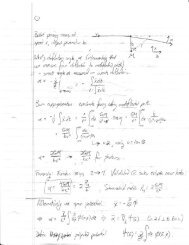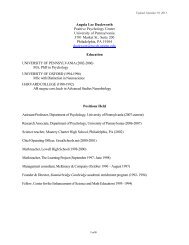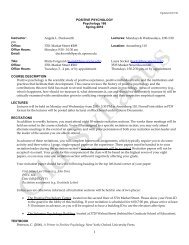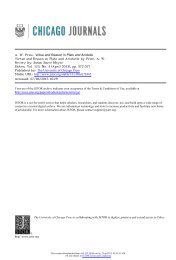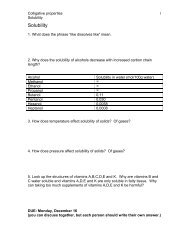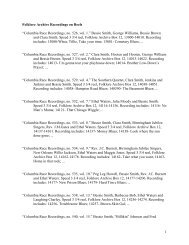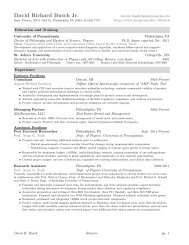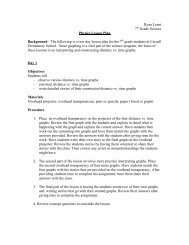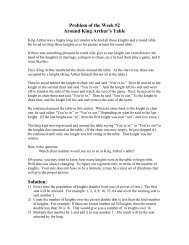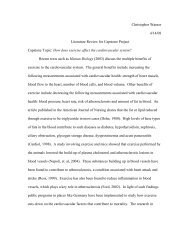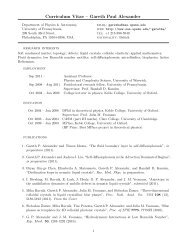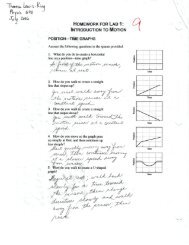Punnett Squares and Binomials
Punnett Squares and Binomials
Punnett Squares and Binomials
Create successful ePaper yourself
Turn your PDF publications into a flip-book with our unique Google optimized e-Paper software.
Enriched Algebra I<br />
<strong>Punnett</strong> Square Activity<br />
Name: __________________<br />
Date: ___________________<br />
1. In tigers, the normal color gene C is dominant <strong>and</strong> the white color gene c is recessive.<br />
This means that a tiger whose color genes are CC or Cc will have normal coloring, <strong>and</strong> a<br />
tiger whose color genes are cc will be white.<br />
a. Create a <strong>Punnett</strong> square that represents the cross between two heterozygous ( Cc × Cc)<br />
tigers.<br />
b. Find a model that can be used to represent the <strong>Punnett</strong> square <strong>and</strong> write the model as a<br />
polynomial.<br />
c. Use the polynomial to determine what percent of the offspring will have normal<br />
coloring? What percent will be white?<br />
2. In chickens, there is an incomplete dominance between the normal-feathered gene F<br />
<strong>and</strong> the frizzle-feathered gene f.<br />
a. Create a Punnet square that represents the cross between two heterozygous ( Ff × Ff )<br />
chickens.<br />
b. Find a model that can be used to represent the <strong>Punnett</strong> square <strong>and</strong> write the model as a<br />
polynomial.<br />
c. Use the polynomial to determine the probability of all possible outcomes.



